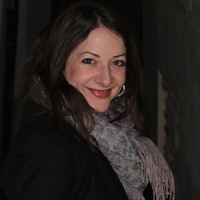Eva Mira Youssef-Grob
University of Zurich, Switzerland, Sprachenzentrum, Faculty Member
Research Interests:
Research Interests:
Research Interests:
Research Interests:
... Page 3. Archiv für Papyrusforschung und verwandte Gebiete Begründet von Ulrich Wilcken Herausgegeben von Jean-Luc Fournet Bärbel Kramer Wolfgang Luppe Herwig Maehler Brian McGing Günter Poethke Fabian Reiter Sebastian Richter Beiheft... more
... Page 3. Archiv für Papyrusforschung und verwandte Gebiete Begründet von Ulrich Wilcken Herausgegeben von Jean-Luc Fournet Bärbel Kramer Wolfgang Luppe Herwig Maehler Brian McGing Günter Poethke Fabian Reiter Sebastian Richter Beiheft 29 De Gruyter Page 4. ...
Research Interests: Papyrus and De Gruyter
Research Interests:
Research Interests:
1. Documentary private and business letters Only a few hundred documentary private and business letters in Arabic script have been published to date. The major editions comprise a total of about 600 items. Of these, there are 500 with a... more
1. Documentary private and business letters Only a few hundred documentary private and business letters in Arabic script have been published to date. The major editions comprise a total of about 600 items. Of these, there are 500 with a full translation and scan, 100 without scan. About two third of them are business letters, the other third private letters, although this differentiation is in many instances problematical. Nearly all documents stem from Egypt, although some were written outside Egypt and sent to partners within Egypt. For most items, the discovery location is unknown. However, the available information from the collections or the documents themselves, indicates a dominance of Upper Egypt and the Fayum. About 60% of these letters are written on papyrus (7 to beginning of 10 c.) and 40% on paper (after the beginning of 10 c.). Less than half a percent is covered by other writing materials. The dominance of papyrus documents does not reflect the actual holdings of most...
Research Interests:
Research Interests:
Does radiocarbon dating provide useful results for studying Early Islamic history? This paper has been written in the context of a series of 14C tests on early Quran manuscripts and other Early Islamic and Christian sources, initiated by... more
Does radiocarbon dating provide useful results for studying Early Islamic history? This paper has been written in the context of a series of 14C tests on early Quran manuscripts and other Early Islamic and Christian sources, initiated by the Coranica project. In the field of Quranic studies, this was the first time 14C testing has been done on a large scale. This paper, however, concentrates less on the results than on the issue of 14C dating itself. It shows which factors play the crucial roles for radiocarbon dating and what one can expect from the results.
Research Interests:
Josef von Karabacek was one of the central characters involved in establishing the Vienna papyrus collection “Papyri Erzherzog Rainer”. He knew the collection like no one else after him – and was not only familiar with the Arabic papyrus... more
Josef von Karabacek was one of the central characters involved in establishing the Vienna papyrus collection “Papyri Erzherzog Rainer”. He knew the collection like no one else after him – and was not only familiar with the Arabic papyrus documents – he also knew the Arabic papers well. In 1887 he wrote his
seminal article on Arab paper in which he combines literary and documentary evidence. He draws on his direct work and experience with the documents of the Vienna collection and refers to a multitude of Arabic paper documents.
Among them are some that he assigned a very early date. Some years later, in 1893, in the famous “Papyri Erzherzog Rainer: Führer durch die Ausstellung” (PERF) we are provided with another compilation of early Arabic paper documents
comprising inventory numbers and short descriptions of documents. Unfortunately, both publications lack illustrations of the presumably early documents.
Karabacek suggested, that some of the documents stem actually from the 2nd century of the Hiǧra and many from the 3rd century. These claims of Karabacek will be examined in this article, following his references to early paper documents from both aforementioned publications of 1887 and 1893.
seminal article on Arab paper in which he combines literary and documentary evidence. He draws on his direct work and experience with the documents of the Vienna collection and refers to a multitude of Arabic paper documents.
Among them are some that he assigned a very early date. Some years later, in 1893, in the famous “Papyri Erzherzog Rainer: Führer durch die Ausstellung” (PERF) we are provided with another compilation of early Arabic paper documents
comprising inventory numbers and short descriptions of documents. Unfortunately, both publications lack illustrations of the presumably early documents.
Karabacek suggested, that some of the documents stem actually from the 2nd century of the Hiǧra and many from the 3rd century. These claims of Karabacek will be examined in this article, following his references to early paper documents from both aforementioned publications of 1887 and 1893.
Research Interests:
Research Interests:
Arabic letters on papyrus challenge the modern reader. There are few to no diacritical dots to distinguish homographs, no systematic spacing between single words, and in the majority of cases a low degree of graphical structuring.... more
Arabic letters on papyrus challenge the modern reader. There are few to no diacritical dots to distinguish homographs, no systematic spacing between single words, and in the majority of cases a low degree of graphical structuring. However, contemporary readers usually read and understood these documents easily – probably because the recipient of a letter knew what to expect. The letters are formulaic, and their information packaging follows an algorithm typical for their time and content. Here formulaic letter writing means not only the reuse of the same formulae or topoi but expressing thoughts in a predictable linguistic way and order, both as a matter of readability and as one of adequacy and politeness. The main concern of this work is to discover these unwritten rules and norms behind Arabic letter writing on papyrus.
